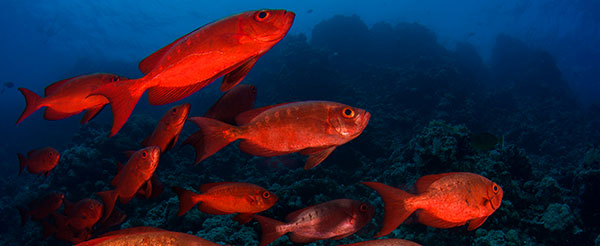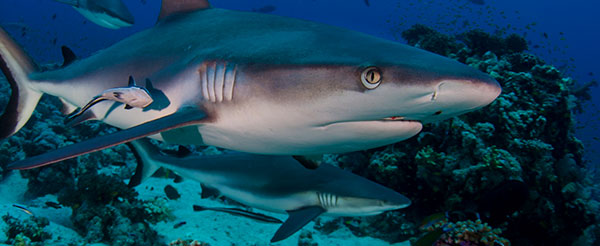At the end of the diving safari tour there is a chance to visit Suakin, the ancient main port city in the Red Sea. Today gentle winds blow through the blindingly white walls and building remains that were made of coral “bricks”. It is easy to imagine the beautifully built houses with their mashrabeyas and the bustling city it used to be…
Tag: red sea
Thistlegorm
THE STORY OF THE SINKING:
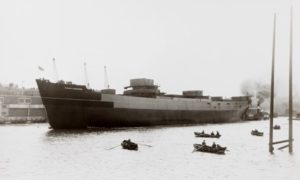 In May, 1941 the Thistlegorm was being loaded with war supplies in her home port of Glasgow. She was to carry huge amounts and a wide array of military cargo including land mines, shells, ammunition, weapons, trucks, armoured cars, motorcycles, trailers, vehicle and aircraft spare parts, radios, rubber boots and a whole lot more. There were also a couple of railway engines, tenders and water carriers for the Egyptian Railways. She joined a large convoy and headed for Alexandria.
In May, 1941 the Thistlegorm was being loaded with war supplies in her home port of Glasgow. She was to carry huge amounts and a wide array of military cargo including land mines, shells, ammunition, weapons, trucks, armoured cars, motorcycles, trailers, vehicle and aircraft spare parts, radios, rubber boots and a whole lot more. There were also a couple of railway engines, tenders and water carriers for the Egyptian Railways. She joined a large convoy and headed for Alexandria.
The Axis Forces having occupied almost all of the northern Mediterranean coastline, the convoy followed the safer route to Alexandria which was via South Africa. After sailing north along Africa’s eastern coasts, the convoy arrived in the Red Sea.
When arriving at the entrance to the Gulf of Suez, Thistlegorm was assigned “safe anchorage” and was to wait for further information. They settled in to wait for clearance to proceed through the channel to Alexandria.
The length of wait was dependent on several factors such as aircraft activity, cargo priority and the time the vessels had been waiting already. Thanks to two vessels colliding in the gulf and virtually blocking the way through, Thistlegorm was forced to wait two weeks, standing idle.
German night-flying aircrafts were alerted to possible large-sized vessels in the Red Sea. On October 5, 1941 at about 11pm two aircrafts left their base in Crete and headed for the Egyptian coast. Their mission was to seek and destroy.
Just as their fuel levels were getting to a critical low and they thought their mission was fruitless, the Germans noticed a ship at anchor. One of the pilots dipped his plane low and approached the Thistlegorm, dropping his bombs right over the bridge. The bombs detonated the ammunition cargo and the explosion ripped the ship open.
The vessel began to sink quickly and the crew speedily abandoned the ship. The Thistlegorm sank at 1:30am on October 6, 1941. In all, 9 people lost their lives.
DIVING AT THE WRECK:
 The Thislegorm was initially discovered by the legendary Jacques-Yves Cousteau in 1956. She sits on the seabed at 28m in an upright sailing position. The very top of the structure is only 12m from the water surface. She is one of the most sought-out wrecks in the world and with reason.
The Thislegorm was initially discovered by the legendary Jacques-Yves Cousteau in 1956. She sits on the seabed at 28m in an upright sailing position. The very top of the structure is only 12m from the water surface. She is one of the most sought-out wrecks in the world and with reason.
The holds are still laden with cargo. Divers can discover the tons of equipment such as jeeps, trucks, tires, motorcycles and alike and easily imagine the life onboard this awesome vessel. Around the vessel there also items that were ejected from the cargo hull following the tremendous explosion. There are tanks, towing equipment, boxed ammunition and weapons.
Access is easy through the blasted-out bridge area. The crumpled decking folding out as an open tin can is still as it had been after the explosion. The image tells of a devastating event. Vehicles are parked in the hold as if waiting to be unloaded. On the starboard side besides the vehicles, other items can be found like small arms and weapons. On the stern two deck-mounted guns are still in place and are best viewed from below.
Usually there is a current but it can get quite strong coming in from the north. Groupers, jackfish, tuna and the occasional black-tip shark are just a few of the larger marine life visiting this place. The usual reef fish and creatures are also present and provide a nice distraction from the wreck.
Caught between dolphins and sharks
We found ourselves caught between dolphins and sharks during our dives last week in Sudan. One excitement after the other, one dolphin after the other! If we were not diving, we were snorkelling or “scootering” among the dolphins in the turquoise waters of the lagoon at Shaab Rumi.
Tour date: April 13-20, 2013
Itinerary: Sudan-North
Air temperatures: 35C
Water temperatures: 27C
Visibility: 30m
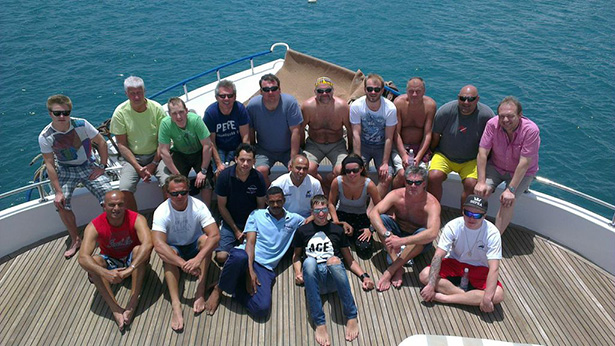
The weather was perfect, we were able to dive at all the sites in our North itinerary. We ran into hammerheads at Angarosh, Qita El Banna and Shaab Rumi too, where, not surprisingly, we met up with a school of 30 hammerhead sharks. To top it off, 4-5 bottlenose dolphins followed the zodiac and swam to us, while on out safety stop. It seems this was the week for dolphins and sharks because after the shark dives, we were able to snorkel with dolphins by the boat in the lagoon, not once but twice.
Our weekly video is full of action too. Click the picture to watch! With scooters among dolphins.
Day 1: Sanganeb West, Sangabeb West, Sanganeb West
Day 2: Angarosh, Angarosh, Merlo, Gota Shambaia
Day 3: Qita el Banna, Blue Belt, Precontinent, Precontinent
Day 4: Shaab Rumi, Shaab Rumi, Shaab Rumi észak, Shaab Rumi lagoon
Day 5: Shaab Rumi, Sanganeb South, Sanganeb South, Umbria
Day 6: Umbria, Umbria
A new week, new hopes. We will be back next week again and let you know what we will have seen.
In case you have missed out on our previous reports, you can catch up by following these links:
Scooters in action!
Sudan, the Jolly, under and above water
An Eiffel Tower in Sudan
Manta, hammerhead, barracuda!
The sharks winked back!
Angarosh, the “Mother of Sharks”
A perfect start in Sudan!
Fish parade in the month of the Pisces!
An Eiffel Tower in Sudan
We have concluded a classic week in Sudan with grey reef sharks, white-tip sharks and barracudas. There were no strong currents this weeks which kept the hammerheads away but we still had plenty to see!
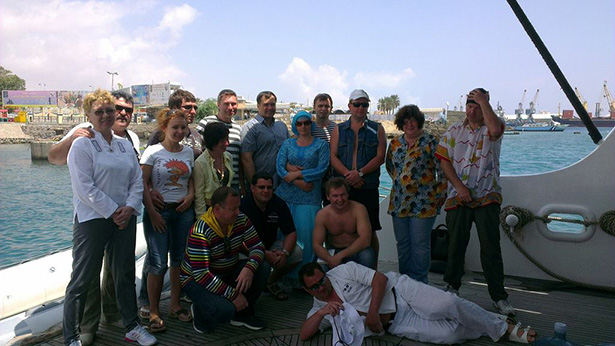 Tour date: March 16 – 23, 2013
Tour date: March 16 – 23, 2013
Itinerary: Sudan-North
Air temperature: 30C
Water temperature: 26C
Visibility: 30m
Because of the strong winds, Shaab Suedi was the most northern site on this tour. After the first 2 dives in the morning, we headed straight south. Temperatures hovered around 30C all week but there were a couple of days laced with some clouds and there was no need for AC either.
We dived the Sanganeb reef system heavily this week too, although out of the 124 reefs, there are a few still left behind to discover. Its famous Eiffel Tower-like lighthouse was there to greet us again. Our cameras were working from atop of the structure, taking in the gorgeous view from above – we were in the middle of the sea, surrounded by emerald reefs. There are always a couple of Sudanese soldiers on duty for 3-4 months at a time and they happily welcome every visitor.
Day 1: Shaab Suedi Fasma, Shaab Suedi Fasma, Shaab Suedi Fasma
Day 2: Blue Belt, Shaab Rumi South, Shaab Rumi South, Precontinent
Day 3: Shaab Rumi South, Shaab Rumi South, Precontinent, Shaab Rumi Lagoon
Day 4: Shaab Rumi South, Sanganeb North, Sanganeb West, Sanganeb West
Day 5: Sanganeb North, Sanganeb South, Sanganeb South, Umbria
Day 6: Umbria, Umbria
As usual, the dive sites were at our own disposal or on occasion, had to share with one other boat. And the underwater life… It was amazing once again. On most of our dives we met up with grey reef sharks or white-tip sharks. Besides the uncountable tiny fish swarming around us, we were lucky enough to see other larger pelagic species too. We were face to face with lots of large Napoleon fish, marvelled at huge schools of barracudas and jackfish. So, it is not hard to believe that all our day dives were fascinating. Our night dives were equally exciting. We saw Spanish dancers, crabs, scorpion fish, barracudas and rainbow-coloured nudibranches.
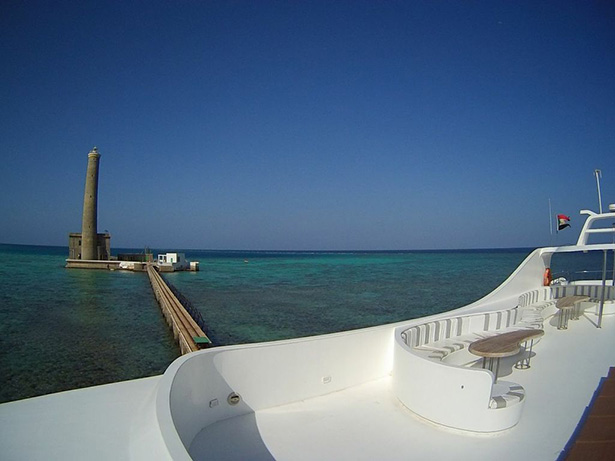 A new week, new hopes. We will be back next week again and let you know what we will have seen.
A new week, new hopes. We will be back next week again and let you know what we will have seen.
In case you have missed out on our previous reports, you can catch up by following these links:
Manta, hammerhead, barracuda!
The sharks winked back!
Angarosh, the “Mother of Sharks”
A perfect start in Sudan!
Fish parade in the month of the Pisces!

